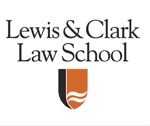Animal Law Review
First Page
329
Abstract
Rabbits are most commonly perceived as soft, fuzzy, tender, loving, active household pets. However, rabbit meat is growing in popularity among urban farmers, foodies, and chefs alike. The pet rabbit industry is subject to a variety of laws and regulations intended to ensure the humane and proper treatment of these beloved pets. Yet, 'meat rabbits,' which are often the same breed or species as pet rabbits, are often not covered by either the protections that govern the treatment of animals used for meat or the protections that govern the treatment of rabbits as pets or companion animals. The lack of laws and regulations applicable to the meat rabbit industry has led to widely documented inhumane treatment and animal abuse. Such beloved companions deserve the benefits of increased government oversight of rabbit meat production. This Article proposes that, on the federal level, the United States Department of Agriculture inspection of commercial rabbit producers and processors should be mandatory rather than voluntary. States must also play a central role because, given the nature of the rabbit meat industry, it is especially important that any new standards reach small farms and urban farmers, in addition to commercial producers. This Article proposes that state standards use puppy mill laws as guidance, given rabbits' societal status as companion animals. New laws governing the raising of meat rabbits should establish standards for light and ventilation, requirements for environmental enrichment, limits on breeding, and floor space minimums for cages. Such changes will ensure that the rabbit's more typical role as a companion animal is acknowledged, while providing the necessary protection from abuse and mistreatment when rabbits are raised for meat consumption.
Recommended Citation
Taylor Budnick,
A 'Hare' Raising Lapse in Meat Industry Regulation: How Regulatory Reform Will Pull the Meat Rabbit Out from Welfare Neglect,
Animal L. Rev.
329
(2015).
Available at:
https://lawcommons.lclark.edu/alr/vol21/iss2/6

